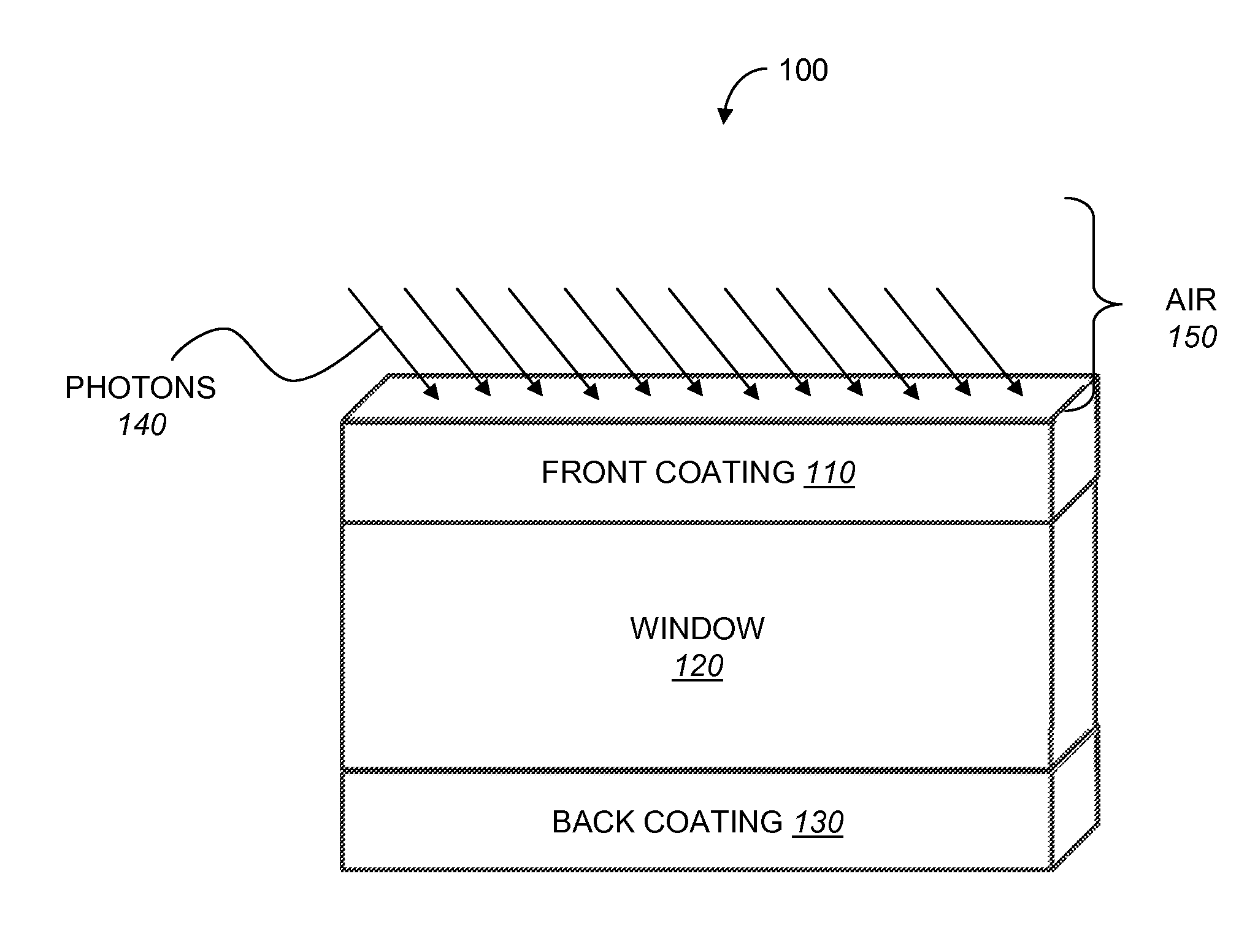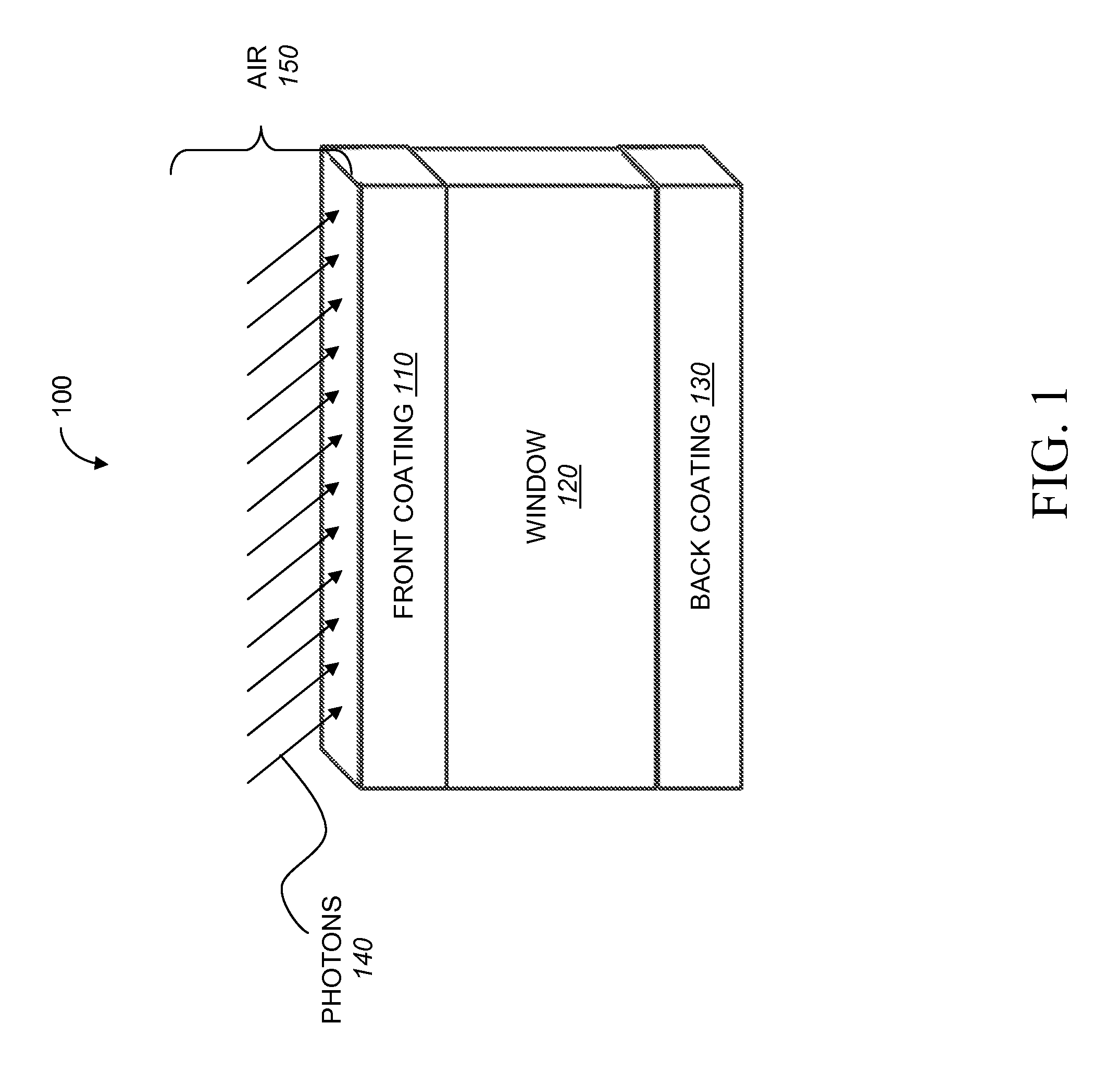High transmittance optical windows and method of constructing the same
a technology of optical windows and high transmittance, applied in the field of transparent optical windows, can solve the problems of reducing the transmittance of optical windows through glass, sapphire and quartz windows, limiting the reflection loss of fresnel, and becoming quite substantial for off-angle light incidence, etc., to achieve the effect of maximizing the transmittance of optical windows, reducing reflection losses, and increasing transmittan
- Summary
- Abstract
- Description
- Claims
- Application Information
AI Technical Summary
Benefits of technology
Problems solved by technology
Method used
Image
Examples
Embodiment Construction
[0024]Ultra-high, broadband transmittance through coated glass windows is demonstrated over a wide range of incident angles. The measured improvements in transmittance result from coating the windows with materials consisting of porous nanorods. The use of porous nano-materials fabricated by, for example, oblique-angle deposition, enables a tunable refractive index, flexibility in choice of material, simplicity of a physical vapor deposition process, and the ability to optimize the coating for any substrate-ambient material system. A multi-layer coating adapted for a glass substrate, is fabricated and characterized as described below. For multi-layer AR coatings, according to an illustrative embodiment, the refractive index of the layers is step-graded (i.e. decreased in discrete steps), from the substrate value, 1.46, to a value of 1.18, according to the various illustrative embodiments.
[0025]FIG. 1 details a cross-sectional view illustrating a high transmittance window structure 1...
PUM
 Login to View More
Login to View More Abstract
Description
Claims
Application Information
 Login to View More
Login to View More - R&D
- Intellectual Property
- Life Sciences
- Materials
- Tech Scout
- Unparalleled Data Quality
- Higher Quality Content
- 60% Fewer Hallucinations
Browse by: Latest US Patents, China's latest patents, Technical Efficacy Thesaurus, Application Domain, Technology Topic, Popular Technical Reports.
© 2025 PatSnap. All rights reserved.Legal|Privacy policy|Modern Slavery Act Transparency Statement|Sitemap|About US| Contact US: help@patsnap.com



